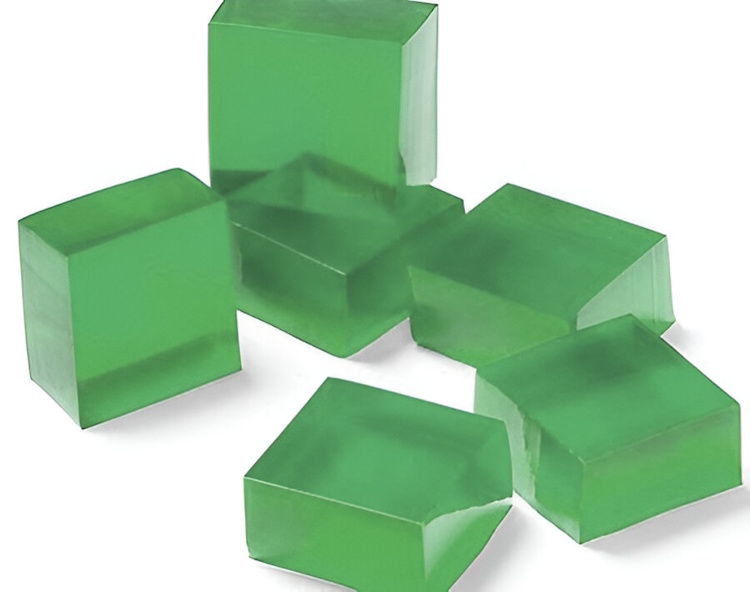Why are living things, whether they are gigantic whales or tiny insects, all made up of cells that are incredibly small? Cells are always small; a whale doesn't have bigger cells than an ant – it just has a lot more of them.
For a cell to survive, it must constantly absorb essential nutrients and move them inside and simultaneously get rid of waste. But as cells grow bigger, it becomes harder for materials to move in and out efficiently.
In this activity, you will build model “cells” out of corn starch to explore how the size of a cell affects how quickly substances can diffuse inside it.
Science Involved
Diffusion is the natural process where molecules move randomly from an area where they are highly concentrated to an area where they are less concentrated, spreading out passively without the cell using energy.
In cells, diffusion allows materials like oxygen and carbon dioxide to move in and out through the cell membrane.
The rate of diffusion depends on the surface area-to-volume ratio – small cells or cells with more surface area relative to their volume allow faster diffusion. That’s why real cells stay small or have special shapes that make diffusion easier.
Activity
Requirements
Gelatin powder or corn starch, water, beaker or bowl, spoon, heat source (like a stove or hot plate), universal indicator solution, vinegar (acidic solution), plastic knife, ruler, tray or dish, stopwatch or timer.
Safety Instructions
Handle hot mixtures carefully when heating the gelatin powder or corn starch paste. Allow it to cool before touching or cutting it.
Getting Ready
Prepare Model of Cell
- Mix 3 tablespoons of gelatin powder or corn starch with 1 cup of water in a bowl.
- Heat the mixture slowly while stirring until it thickens into a clear, smooth paste.
- Add a few drops of universal indicator and stir until the color is evenly mixed.
- Pour the mixture into a rectangular mold, aiming for a depth of about 3 cm and let it cool and set.
Procedure
-
Use the ruler and plastic knife cut out three modes having the same total volume of 27 cm³.
-
Model 1: One single cube (3 cm x 3 cm x 3 cm = 27 cm³).
-
Model 2: 27 individual cubes, (each 1 cm x 1 cm x 1 cm). The total volume of these 27 small pieces is also 27 cm³.
-
Model 3: A rectangular prism (1 cm x 9 cm x 3 cm = 27 cm³).
-
-
Place all three models (Model 1, Model 2 – all 27 pieces, and Model 3) into separate beakers or cups containing enough vinegar to completely submerge them and immediately start your timer.
-
Allow the blocks to soak for 10 minutes. The vinegar will slowly diffuse into the indicator-infused gel, causing a visible color change (e.g., from blue/green to red/yellow).
-
After the set time, remove the blocks/pieces, gently blot them dry, and cut the models exactly in half. Note the depth that the color change penetrated into the interior of models. Record your observations.
-
Calculate the surface area (SA), volume (V), and the surface area-to-volume ratio for all three models.
Observations
| Model | Surface Area (cm2) | Volume (cm3) | Surface area to Volume ratio | Depth of penetration |
|---|---|---|---|---|
| Model 1 | ||||
| Model 2 | ||||
| Model 3 |
Reflect and Discuss
-
You would have observed that the distance the acid diffused into the material is the same across all models. Why is this distance constant regardless of the model size, and what does this observation tell you about the diffusion speed itself?
-
If you compare the penetration efficiency (the ability of the substance to reach the center) of Model 1 (the cube), Model 3 (the rectangular prism), and a hypothetical sphere, all having the exact same volume (27 cm³), which shape do you predict would be the least efficient at absorbing the solution, and why?
-
Explain how a cell might be able to grow larger than average without sacrificing the efficiency of nutrient uptake and waste removal, relating this back to structures like the microvilli in your small intestine.

